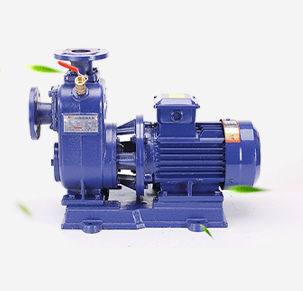English
- Afrikaans
- Albanian
- Amharic
- Arabic
- Armenian
- Azerbaijani
- Basque
- Belarusian
- Bengali
- Bosnian
- Bulgarian
- Catalan
- Cebuano
- Corsican
- Croatian
- Czech
- Danish
- Dutch
- English
- Esperanto
- Estonian
- Finnish
- French
- Frisian
- Galician
- Georgian
- German
- Greek
- Gujarati
- Haitian Creole
- hausa
- hawaiian
- Hebrew
- Hindi
- Miao
- Hungarian
- Icelandic
- igbo
- Indonesian
- irish
- Italian
- Japanese
- Javanese
- Kannada
- kazakh
- Khmer
- Rwandese
- Korean
- Kurdish
- Kyrgyz
- Lao
- Latin
- Latvian
- Lithuanian
- Luxembourgish
- Macedonian
- Malgashi
- Malay
- Malayalam
- Maltese
- Maori
- Marathi
- Mongolian
- Myanmar
- Nepali
- Norwegian
- Norwegian
- Occitan
- Pashto
- Persian
- Polish
- Portuguese
- Punjabi
- Romanian
- Russian
- Samoan
- Scottish Gaelic
- Serbian
- Sesotho
- Shona
- Sindhi
- Sinhala
- Slovak
- Slovenian
- Somali
- Spanish
- Sundanese
- Swahili
- Swedish
- Tagalog
- Tajik
- Tamil
- Tatar
- Telugu
- Thai
- Turkish
- Turkmen
- Ukrainian
- Urdu
- Uighur
- Uzbek
- Vietnamese
- Welsh
- Bantu
- Yiddish
- Yoruba
- Zulu
Telephone: +86 13120555503
Email: frank@cypump.com
Jul . 27, 2024 02:20 Back to list
Efficient Techniques for Transporting and Handling Slurry Mixtures in Industrial Applications
Understanding Pumping Slurries Applications and Challenges
Pumping slurries involves the transportation of mixtures made up of solids and liquids, which are commonly used in various industries, including mining, construction, and wastewater management. Slurry is created when solids are mixed with a liquid, often water, creating a semi-fluid mixture that facilitates the movement of solid materials. This technique is essential for processes like transporting minerals, managing waste, and even in certain agricultural practices. However, pumping slurries presents unique challenges that must be carefully managed to ensure efficiency and prevent potential issues.
Types of Slurries
Slurries can be categorized based on their composition and application. Common types include mineral slurries, which consist of ground-up rock, water, and various additives. In the mining sector, this form of slurry serves to transport ore to processing facilities. Another type is coal slurry, which is a mixture of pulverized coal and water, often pumped through pipelines for energy production. Similarly, in wastewater treatment, sewage slurries are created, consisting of organic and inorganic solids in water, which need to be efficiently pumped to treatment facilities.
The Importance of Proper Pump Selection
Selecting the appropriate pump for transporting slurries is crucial. Various factors influence this decision, including the slurry's viscosity, solid content, and particle size. Centrifugal pumps and positive displacement pumps are commonly used for moving slurries. Centrifugal pumps are favored for lower-viscosity slurries, offering high flow rates and efficiency. However, for thicker, more viscous slurries with a high solid content, positive displacement pumps are often preferable, as they provide a consistent flow and better handling of the solids involved.
Challenges in Pumping Slurries
pumping slurries

Despite the advantages of using slurry pumps, several challenges may arise during the pumping process. One significant challenge is wear and tear on pump components. The abrasive nature of the solid particles can lead to erosion of the pump's interior, resulting in maintenance issues and downtime. Therefore, choosing pumps made from wear-resistant materials is essential for longevity and performance.
Another challenge is the potential for blockages within the pump or pipeline. Larger solid particles can become lodged, stopping the flow and causing pressure buildup. Implementing proper filtration and monitoring systems can help mitigate these risks, ensuring that only adequately sized particles make it through the pumping mechanism.
Operational Considerations
When operating slurry pumps, it is critical to maintain a consistent flow rate to avoid fluctuations that can cause erosion or cavitation, potentially damaging pump components. Additionally, operators must monitor the density and viscosity of the slurry regularly, adjusting the pump's speed or configuration as necessary to adapt to changes in the mixture.
Effective maintenance practices are vital for successful slurry pumping operations. Regular inspection of pump components, monitoring for signs of wear, and timely replacements can significantly reduce the likelihood of unexpected failures. Training for personnel in understanding slurry behavior and the specific requirements of their pumping systems can also enhance operational efficiency.
Conclusion
Pumping slurries is a complex but vital process across many industries. Understanding the properties of different slurries, selecting the appropriate pumping equipment, and addressing the challenges of maintenance and operation can help organizations optimize their slurry handling processes. As technology continues to advance, innovations in pump design and materials will undoubtedly improve the efficiency and reliability of slurry pumping, enabling industries to manage their resources more effectively.
-
ISG Series Vertical Pipeline Pump - Chi Yuan Pumps Co., LTD.|Advanced Hydraulic Design&Energy-Efficient Solutions
NewsJul.30,2025
-
ISG Series Vertical Pipeline Pump - Chi Yuan Pumps Co., LTD.
NewsJul.30,2025
-
ISG Series Vertical Pipeline Pump - Chi Yuan Pumps Co., LTD.|energy-efficient fluid handling&industrial durability
NewsJul.30,2025
-
ISG Series Vertical Pipeline Pump - Chi Yuan Pumps | Advanced Engineering&Industrial Efficiency
NewsJul.30,2025
-
ISG Series Pipeline Pump - Chi Yuan Pumps | High Efficiency, Energy Saving
NewsJul.30,2025
-
ISG Series Vertical Pipeline Pump-Chi Yuan Pumps|High Efficiency&Reliable Performance
NewsJul.29,2025










